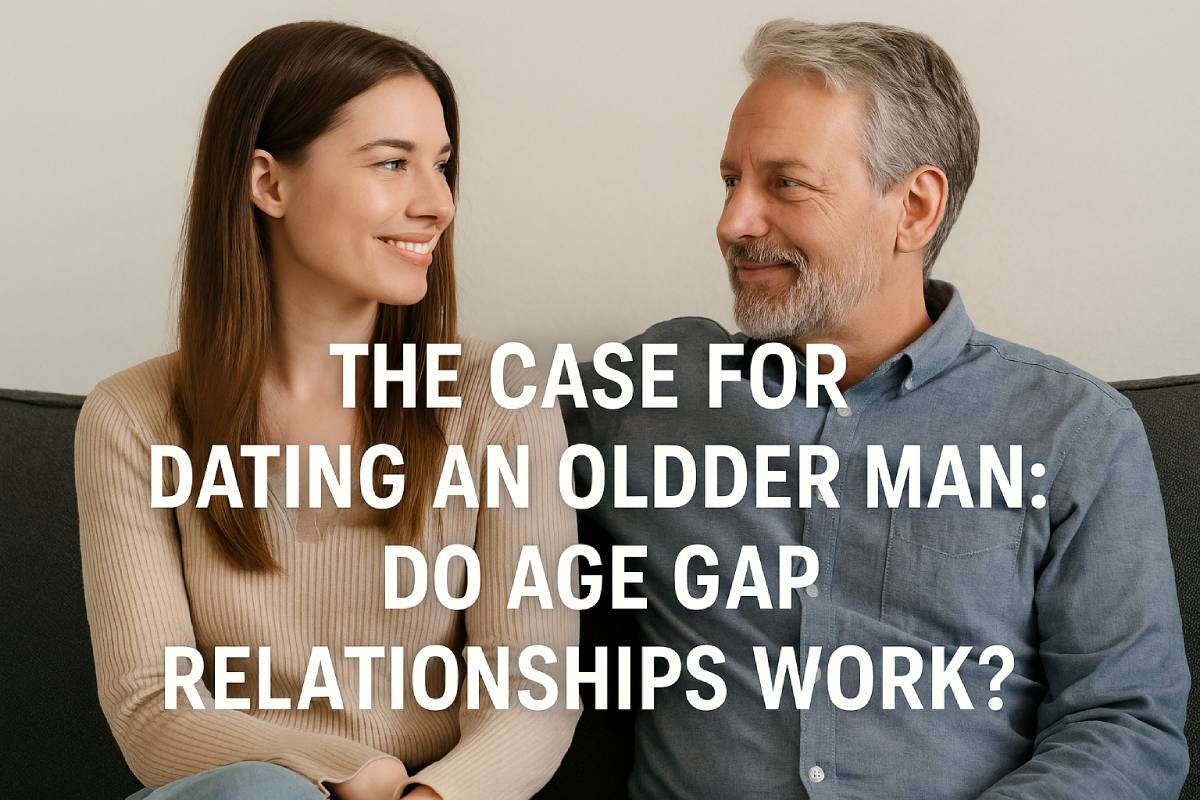The Numbers Tell One Story
Age gaps in relationships get plenty of attention. The data paints a specific picture. In the United States, most married couples stay close in age. The average difference sits at 2.2 years as of 2022. That number has dropped from 4.9 years in 1880.
But plenty of couples break this pattern. About 8.5% of married opposite-sex couples have an age gap of 10 years or more. Almost all these relationships feature an older man with a younger woman. Only 1.3% of US marriages involve a woman who is at least 10 years older than her male partner.
Same-sex couples show different patterns. One in four male couples has an age difference of at least 10 years. For female couples, that number drops to 15%. Geography matters too. African countries report the largest average age gaps in marriages, though wide disparities exist everywhere.
What People Actually Think About Age-Gap Dating
Public opinion on age gaps varies by culture and generation. Most Americans and Europeans feel comfortable with gaps under 10 years. Support drops sharply for differences exceeding 15 years. The old “half your age plus seven” guideline still floats around social conversations.
Younger adults aged 18 to 34 show more openness to age-gap relationships. But concerns about power imbalances persist across all age groups. People worry less when the older partner is financially independent and both parties enter the relationship as adults.
When Romance Takes Different Forms
Age-gap relationships exist on a wide continuum. Some couples meet through conventional channels like work or mutual friends. Others connect through specialized platforms for people seeking specific types of partnerships. Some younger partners specifically seek relationships through dating a sugar daddy website. Still others find love unexpectedly across generational lines at book clubs or volunteer events.
The variety in how these couples form speaks to changing social attitudes. Research shows 8.5% of married opposite-sex couples have an age gap of 10 years or more. These partnerships emerge through countless pathways. What matters most is that both people enter the relationship with clear expectations and a genuine connection.
The Benefits of Age-Gap Relationships
Partners in age-gap relationships report specific benefits. Younger partners often appreciate the financial stability and life direction their older partners bring. They mention feeling secure with someone who has already figured out career goals and personal values.
Older partners frequently describe feeling energized by their younger partners’ perspectives. Many say they appreciate having someone who pushes them to try new things or see familiar situations differently. Some couples report that age differences force better communication. They can’t assume shared references or experiences, so they talk more explicitly about their needs and expectations.
Challenges of Dating an Older Man
Life phase differences create genuine friction. A 35-year-old might want to travel extensively while their 55-year-old partner focuses on retirement planning. These conflicts aren’t theoretical. They affect daily decisions about spending, time allocation, and future planning.
Health concerns arrive on different timelines. The older partner faces age-related health issues while the younger one remains in their physical prime. This mismatch affects everything from activity choices to long-term care planning.
Children complicate matters further. Younger partners, particularly women, often feel pressure to start families quickly. Older partners worry about being elderly parents or may already have children from previous relationships. Blended families with large age gaps between step-siblings create additional complications.
Financial and Power Dynamics in Age-Gap Dating
Financial disparities often exist in age-gap relationships. The older partner typically has accumulated more wealth and career advancement. This imbalance can create dependency or resentment if not addressed openly.
Estate planning becomes pressing earlier than in same-age relationships. Couples need wills, healthcare directives, and clear beneficiary designations. The younger partner might outlive the older one by decades, requiring careful financial planning for that extended period.
Power dynamics deserve honest examination. Age brings authority in many social contexts. Older partners might unconsciously dominate decisions or dismiss their younger partner’s perspectives. Successful couples actively work to balance these dynamics through deliberate effort and regular check-ins.
How Society Has Changed (And Hasn’t)
Remote work has reshaped how age-gap couples build their lives. Younger partners pursue flexible careers that accommodate their older partner’s established routines. Geographic flexibility allows couples to relocate based on retirement preferences or healthcare needs.
Telemedicine helps couples manage health disparities. Regular monitoring and preventive care become easier when both partners can access medical consultations from home. This technology particularly benefits couples living in areas with limited specialist access.
Media representation has shifted somewhat. High-profile age-gap relationships appear more frequently in the news and entertainment. But public reactions remain mixed. Couples still report intrusive questions and skeptical comments from strangers.
Making It Work: Practical Strategies
Successful age-gap couples share certain practices. They discuss expectations early and often. Topics include retirement timing, travel preferences, social circles, and family planning. These conversations happen before major commitments, not after problems arise.
Professional counseling helps many couples. Therapists familiar with age-gap dynamics can facilitate discussions about power imbalances, life stage conflicts, and family reactions. Pre-emptive counseling prevents small issues from becoming relationship-ending problems.
Legal consultation matters too. Couples need clear documentation for healthcare decisions, inheritance, and potential guardianship issues. These preparations feel premature to younger partners but prove essential when health crises occur.
Conclusion: Do Age-Gap Relationships Really Work?
Age-gap relationships can work — but success depends on compatibility, openness, and planning. While statistics suggest higher risks when gaps are very wide, many couples thrive by addressing challenges honestly.
The benefits — financial stability, maturity, and new perspectives — often offset obstacles such as health differences, life-stage conflicts, and power dynamics. What truly matters is whether both partners share values, respect one another, and prepare realistically for the future.
In the end, age-gap dating is less about numbers and more about compatibility. For couples willing to embrace honesty, respect, and communication, age becomes just one factor in a much bigger picture of love, trust, and commitment.






















